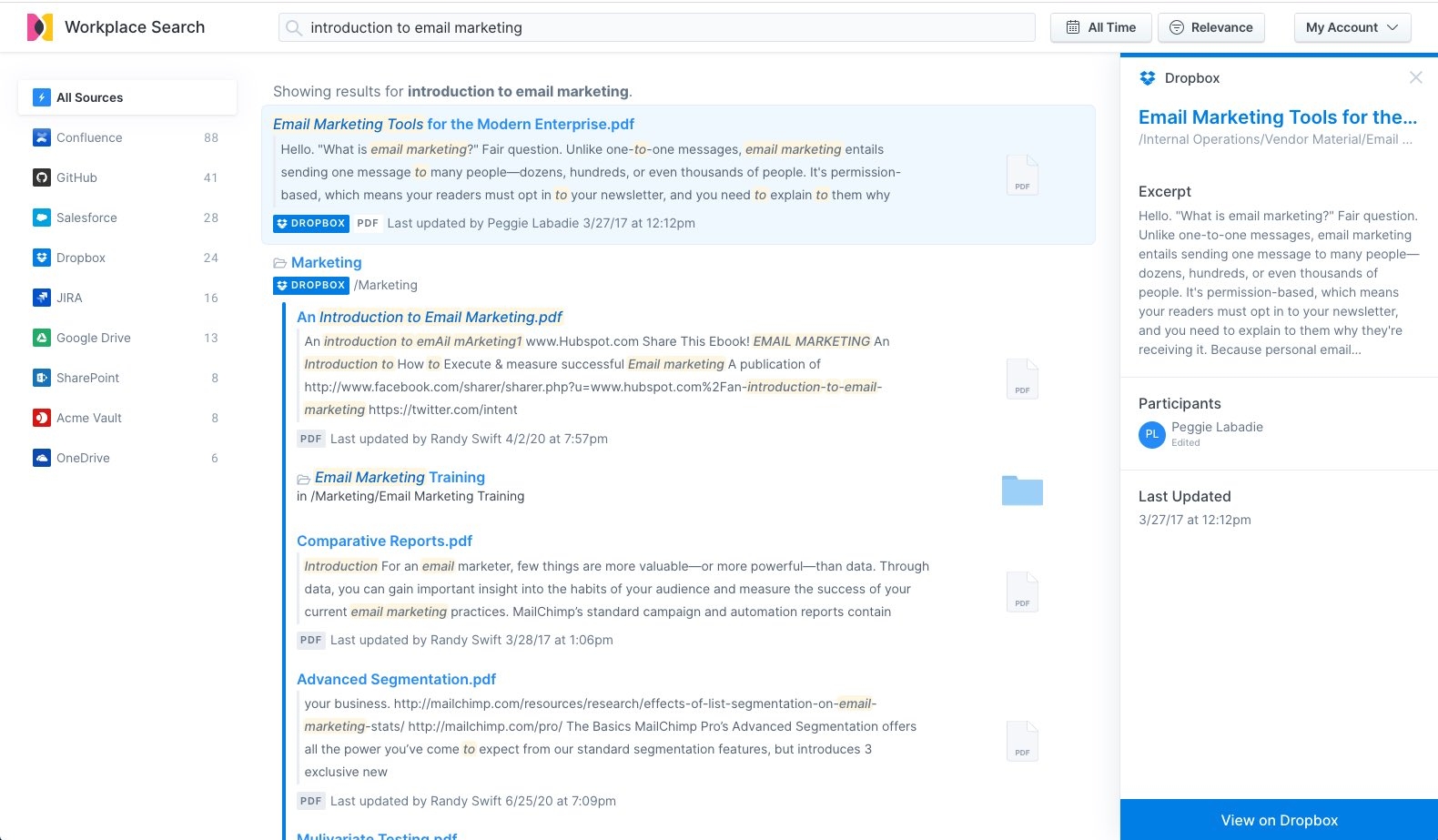Elastic Workplace Search: Unified search across Dropbox and all your other content sources
Modern cloud storage tools such as Dropbox give teams the ability to easily share and centralize content, conveniently collaborate on projects, and sync data across devices. They’ve proven to be real productivity enhancers, especially with the expansion of work-from-home workforces. But cloud storage tools often end up being a dumping ground for lots of content and various clutter, making it clumsy at best (and next to impossible at worst) to find anything. And when you consider the wide variety of different storage, productivity, and collaboration tools in use at the average org, the strain of search difficulties sharpens.
Enter Elastic Workplace Search. It provides all your teams with a single, unified search experience for searching across all their content. Dropbox integration is already built in, so you can easily connect and start ingesting all your Dropbox content, right alongside content from other popular sources, all with integrations built directly into Workplace Search: storage tools (such as Google Drive and OneDrive), and collaboration and productivity tools (such as Confluence, GitHub, and Salesforce). Then your teams don’t need to remember where a piece of information was (a spreadsheet? on the wiki? a PDF?), they can simply kick back and search across all their content from the comfort of a single search bar.

A real added bonus for Workplace Search is its ease of implementation. Where other search solution implementations can drag out for months, Workplace Search can be up and running in a fraction of the time, i.e., days rather than months. And, as noted in more detail below, ongoing maintenance such as relevance tuning is eased because content sources can be prioritized by group via sliders directly in the app.
Simple Dropbox connection
With the Elastic Workplace Search Dropbox content source integration, you can connect and start ingesting data with clicks rather than code. Simply configure the Dropbox integration and then connect a Dropbox instance to your organization.
You can automatically capture, sync, and index files stored in Dropbox. Indexed data includes ID, file metadata, file content (from common document types, such as .doc, .pdf, .xls. .html, and many more), user info (updated by), and timestamps.
For any other source of data you’d like to connect, you can use the Custom Source API. All sources enjoy the same automatic filtering at query time, source prioritization, and customizable display of results.
Content tailored to your teams
Relevance is pretuned right out of the box, and you can further enhance it by prioritizing results for each of your teams. Maybe your Design group wants Dropbox or Confluence results to take precedence, while Engineering may prefer GitHub and Jira results. The best part? You don’t need IT involvement, lines of code, or even any downtime. Nudge a few sliders to place greater importance on the content sources that different teams value most, and then watch the results update automatically.